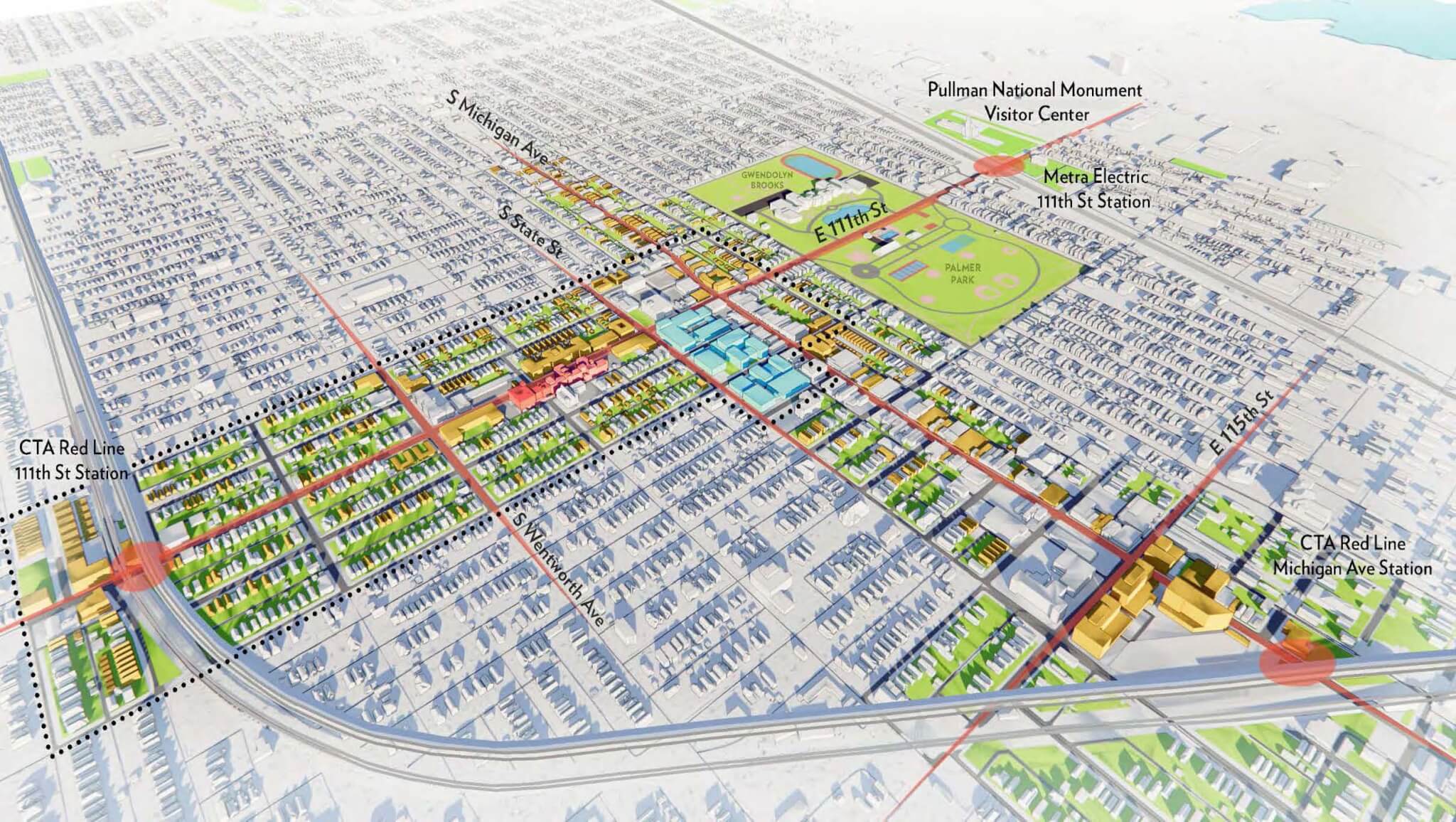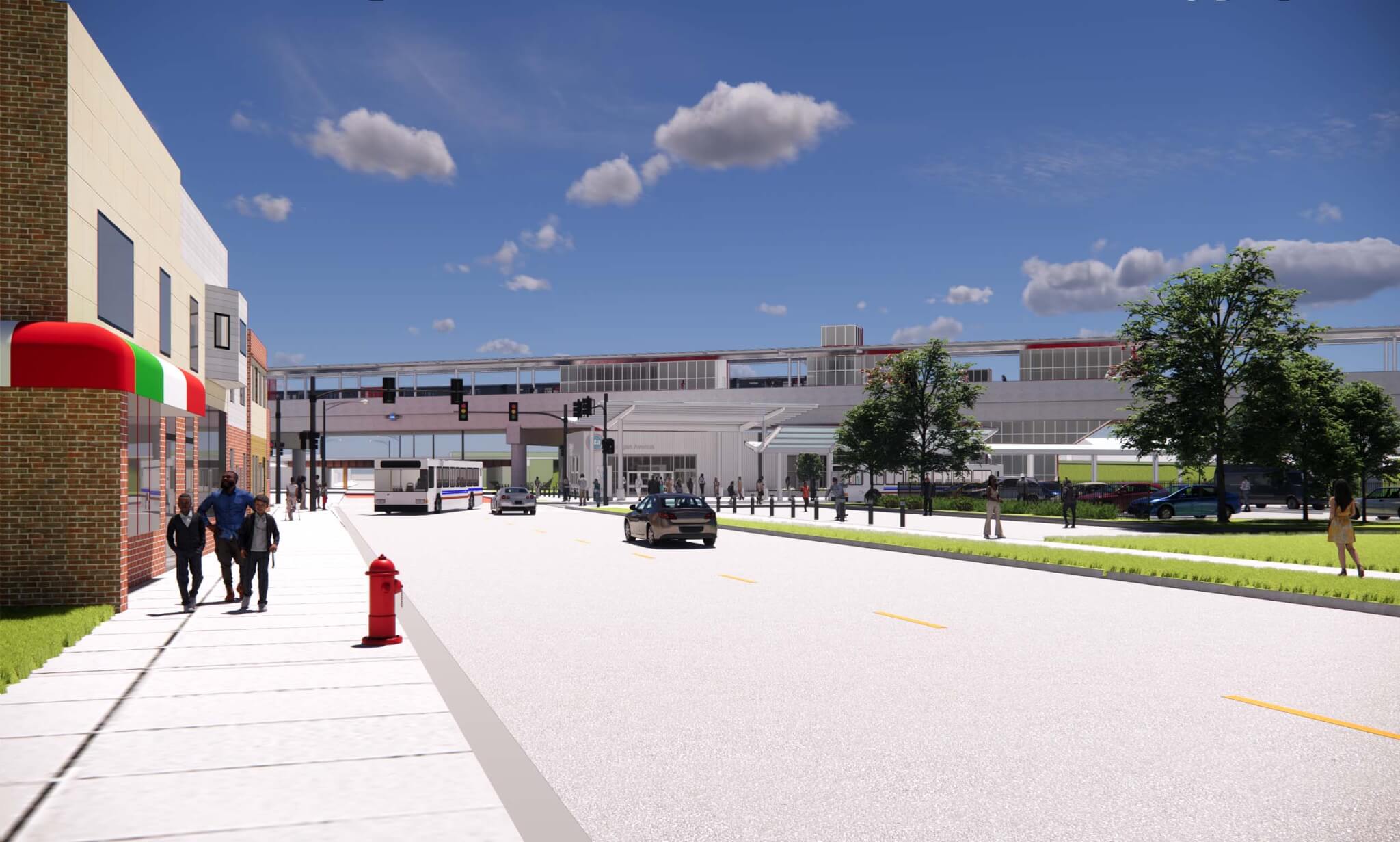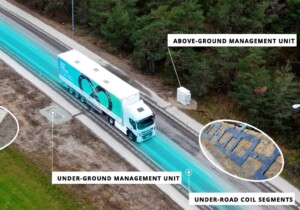With a focus on economic development in a part of the city that’s been starved for transit access and investment for much of its history, the Chicago Transit Authority (CTA) announced in September nearly $2 billion of federal funding for its Red Line Extension. The plan will add four new stops across 5.6 miles to the Red Line El on the far South Side of the city, the only part of Chicago where CTA rail does not approach city limits. Located in some of the least densely populated areas of Chicago, it’s a plan to spur development by building toward greater transit demand.
The Federal Transit Administration New Starts grant of $1.97 billion will be delivered by 2024, providing more than half of the project’s $3.6 billion budget. Local funding comes from a $950 million transit tax-increment financing fund. This is the largest single transit project in CTA history and its largest ever capital grant, deployed to address calcified transit and economic investment inequalities in predominantly Black and poor neighborhoods. It’s been a long-awaited win for South Side residents: Mayor Richard J. Daley first proposed extending the Red Line to the southerly city limits in 1969. The city’s goals are to use transit to increase housing access, aid local businesses, promote local cultural assets, and promote wellness. “The Red Line Extension will be one of the single biggest investments on the Far South Side in decades,” said CTA spokesperson Tammy Chase.

The new track will be mostly elevated, transitioning to at-grade before the final station at 130th Street; there will be no intersections with existing roadways. The city is purchasing 86 parcels along the route emanating southward from the 95th Street station. Chase said fewer than half of these parcels are single-family homes and many are currently vacant. In addition to new stations at 103rd Street, 111th Street, Michigan Avenue near 116th Street, and 130th Street (which will include bike infrastructure and parking), the plan includes a new rail yard at 120th Street and Cottage Grove Avenue. Construction is likely to begin in 2025 and be completed by 2029.
The CTA recently issued an RFP to several design-build conglomerates—FH Paschen, Ragnar Benson, Milhouse and BOWA Joint Venture; Kiewit Infrastructure; and Walsh VINCI Transit Community Partners—which will compete for the contract, set to be assigned in late 2024. Long term, it’s estimated that the extension will create 25,000 new jobs and spur $1.7 billion in real estate development. It’s part of a “transit-supportive development plan” coauthored by Chicago’s Department of Planning and Development (DPD). “This project has always been more than just a transit project, and one of the goals as we developed it was to stimulate transit-oriented development around stations in disinvested areas,” said Chase.
With public input, the CTA and DPD have identified desired development patterns around the four stations. Most notably, the station at 111th Street is planned as an anchor for the Roseland Medical District, a multipurpose health campus surrounding the 100-year-old Roseland Community Hospital, a few blocks away. Roseland has been the focus of preservationists looking out for its glazed terra-cotta brick and Indiana limestone-clad buildings along Michigan Avenue. But the neighborhood has also been identified as one of the areas targeted for investment with Invest South/West, Chicago’s plan to fund historic preservation and new development in underserved South and West Side neighborhoods. Farther south, the station at 130th Street will connect the city’s most geographically isolated neighborhood, which is of course also home to its largest surviving public housing project, Altgeld Gardens. Twenty miles from the Loop and hemmed in by landfills, a water reclamation plant, refineries, and more, Altgeld Gardens still suffers from rampant pollution that inspired the birth of the environmental justice movement. Abraham Lacy is the president of the Far South Side Community Development Corporation, which focuses on small business and community and housing services, as well as development and planning. He’s also the interim executive director of the Roseland Medical District. As such, he has been involved with the effort to extend the Red Line to the far South Side for more than a decade. “Our primary push is to build up density,” he said. “Transit is really one of the greatest catalysts.”

For Lacy, the extension is vital because of the way it will complement the existing transit infrastructure in the far south, primarily Metra commuter rail and the bus system, which typically travels east to west along arterial roads. “We have transit access down here, but connectivity with other [networks] is not readily available,” he said. The population of the far South Side dropped by 20 percent from 2000 to 2018, according to the DPD, and Lacy said that transit access is one reason. A journey to the Loop can take 90 minutes one way, as multiple buses may be required before a rider steps onto a rail platform at 95th Street. The CTA estimates that the extension will save commuters 30 minutes per trip. If simply accessing healthcare, like at the Roseland Medical District, is a transit ordeal, it’s hard to call a neighborhood livable. “That’s one of the reasons that folks are leaving the area,” said Lacy. “[They’re] not going to live in an area that’s not going to service [their] health needs.”
“When you marginalize a subset of people for 60-plus years, it’s not just about how this is going to improve the economy of the city, which it will,” he said. “It breathes hope into your neighborhood, because now you’re saying, ‘The city cares about me enough that I can get public transit into the rest of the city.’”
Zach Mortice is a Chicago-based design journalist and critic who focuses on the intersection of architecture and public policy.











